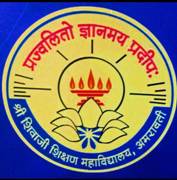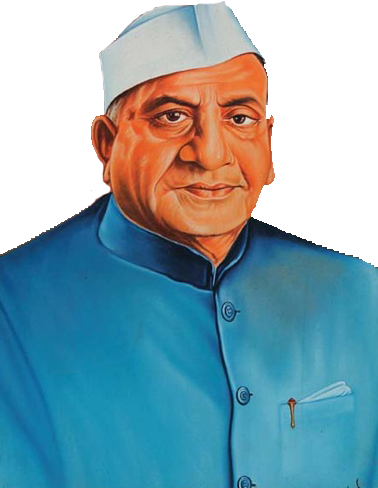
Shri Shivaji Education Society's
Shri Shivaji College of Education
SHIVAJI NAGAR, AMRAVATI 444 603 (M.S.) INDIA
Accredited by NAAC With B++ Grade With a CGPA of 2.89



• It provides an opportunity to students to understand and internalize the basic mathematical concepts through concrete objects and situations.
• It enables the students to verify or discover several geometrical properties and facts using models or by paper cutting and folding techniques.
• It helps the students to build interest and confidence in learning the subject.
• The laboratory provides opportunity to exhibit the relatedness of mathematical concepts with everyday life.
• It provides greater scope for individual participation in the process of learning and becoming autonomous learns.
• The laboratory allows and encourages the students to think, discuss with each other and the teacher and assimilate the concepts in a more effective manner.
• It enables the teacher to demonstrate, explain and reinforce abstract mathematical ideas by using concrete objects, models, charts, graphs, pictures, etc.
Mathematics Laboratory is a place where students can learn and explore mathematical concepts and verify mathematical facts and theorems through a variety of activities using different techniques. These activities may be carried out by the teacher or the students to explore, to learn, to simulate interest and develop favorable attitude towards mathematics.
Thus, the purpose of a mathematics laboratory is to enable:
• A student teacher to learn mathematics with the help of concrete objects and to exhibit the relatedness of mathematics with everyday life.
• A student teacher to verify or discover some geometric properties using models, measurements, paper cutting, paper folding, etc.
• A student teacher to use different tables and ready beckoners in solving some problems.
• A student to draw graphs and do certain calculations using computers and calculators.
• The students to do some field work like surveying, finding heights, making badminton courts, etc., using instruments kept in the laboratory.
• The students and teachers to organise mathematics club activities including celebration of birthdays of famous mathematicians.
• The students to listen or view certain audio or video cassettes.
• A student to see a certain programme on a computer as a part of remedial instruction or enrichment under the proper guidance of the teacher.
• The students to perform certain experiments, which can be easily evaluated by the teacher.
• The students to do certain projects under the proper guidance of the teacher.
• The students to perform certain recreational activities in mathematics.
• A teacher to visually explain some abstract concepts by using threedimensional models
• A teacher to demonstrate certain concepts and patterns using charts and models.
• A teacher to demonstrate and reinforce the truth of certain algebraic identities using different models.
• A teacher to demonstrate the truth of various formulae for areas and volumes of different plane and solid figures using models.
• A teacher to explain certain concepts using computers and calculators.
• The teachers and students to consult good reference mathematics books, journals, etc., kept in the laboratory.
• The teachers to meet and discuss important issues relating to mathematics from time to time.
• A teacher explain certain concepts, data, graphs, etc., using slides.
• A teacher to generate different sets of parallel tests using a computer for testing the achievement of students.
• The budding mathematicians to take inspiration from the lives, works and anecodetes relating to great mathematicians.
Conic Section Set – Mathematics Laboratory Equipment Set consist with 4 section Model of cone 1. Circle 2. Hyperbola 3. Eclipse 4. Perabola
Junior Pythagoras Theorem – Mathematics Laboratory Equipment To verify that in a right triangle square of the hypotenuse is equal to the sum of the squares of other two sides.
Mensuration Kit – Mathematics Laboratory Equipment To understand the area, perimeter, and other physical property of two dimensional figures. This kit is provided with magnetic display model of different two dimensional figures duly printed. Its easy to demonstrate on magnetic board for concrete understanding.
Pythagoras Theorem by Reverse Method – Mathematics Laboratory Equipment This manipulative is made up of foam and magnet DT the back for demonstration purpose.
Pythagoras Theorem By Small Squares – Mathematics Laboratory Equipment To understand Pythagoras’s theorem in fun and learn method by arranging unit square to make side square. Provided with right angle triangle and square in colors.
Ring of Theorems – Mathematics Laboratory Equipment Ring of theorem is use to understand the properties of circle, Properties of opposite angles of cyclic quadrilateral, Angle in a semicircle is a right angle, Angle in the same segment of a circle are equal.
Working Model of Pythagoras Theorem- Mathematics Lab Equipments This working model is the great way to display proof of Pythagoras theorem by volume its easy to demonstrate to whole class that sum of volume of side A and B is equal to the volume of side C.
Counting Abacus (Wooden) – Mathematics Laboratory Equipment This is simple wooden frame abacus With wire, 1st wire contains bead and wire contain beads in ascending order. This abacus can be used in elementary classes to teach counting.
Game of Place Value – Mathematics Laboratory Equipment This wooden base U shape wire abacus with wire and beads in each wire to understand the value up to lac. This abacus gives facility to the student to hold and learn the basic place values of numbers by do and discover concept.